Discover 11 hidden attractions, cool sights, and unusual things to do in Ruthin (United Kingdom). Don't miss out on these must-see attractions: Ruthin Craft Centre, Nantclwyd y Dre, and Moel Famau. Also, be sure to include Collegiate and Parochial Church of St Peter in your itinerary.
Below, you can find the list of the most amazing places you should visit in Ruthin (Wales).
Table of Contents
Ruthin Craft Centre
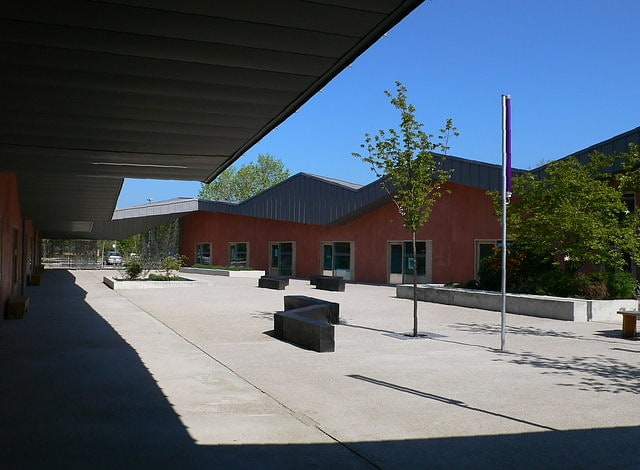
Art gallery in Ruthin, Wales. Ruthin Craft Centre is a craft centre in the historic, market town of Ruthin north Wales.
Ruthin Craft Centre shows the best in national and international contemporary applied arts.
The original Craft Centre was demolished early in 2007, and a new Craft Centre opened in July 2008 in a £4.3 million scheme which contains six craft workshops, larger galleries and an expanded craft retail gallery, two residency studios, an education space and a tourist information centre, as well as a restaurant.
The new building, by architects Sergison Bates has been widely recognised, winning the 2009 Dewi-Prys Thomas Prize, being shortlisted for the 2009 Art Fund Prize and highlighted as a 'Design Delight' by the Design Commission for Wales.
The centre is revenue funded by the Arts Council of Wales and is part of Denbighshire County Council.
Director of the Ruthin Craft Centre, Philip Hughes, was interviewed by Culture24 during the Art Fund nomination in 2009.[1]
Address: Park Road, 01824804 774 LL15 1BB
Nantclwyd y Dre
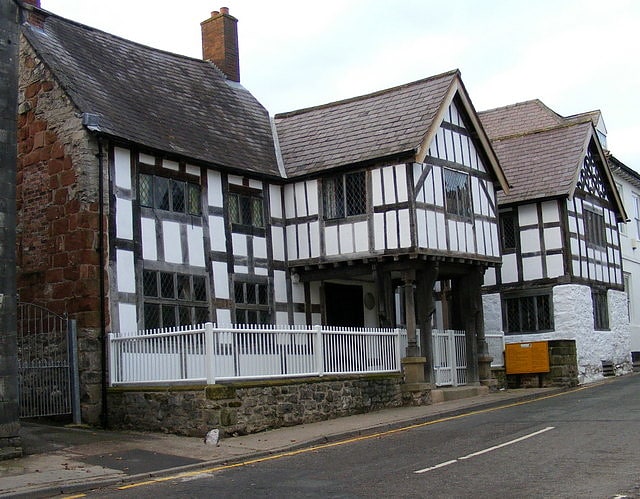
Museum in Ruthin, Wales. Nantclwyd y Dre is a Grade 1 listed house in Ruthin, Denbighshire. It is Wales's oldest dated timbered town house, and is owned by the County and open to the public as a historic house museum.[2]
Address: Nantclwyd House Castle Street, LL15 1DP Ruthin
Moel Famau

Hill in Wales. Moel Famau is the highest hill in the Clwydian Range and the highest point of the county of Flintshire in Wales. It lies on the boundary between Denbighshire and Flintshire. The hill, which also gives its name to the Moel Famau country park, has been classed as an Area of Outstanding Natural Beauty since 1985. It is also surrounded by several well-preserved Iron Age hill forts. It is not, as many people think, the highest peak in North-East Wales; this honour goes to Cadair Berwyn. It is also the third-highest peak in the extended AONB of the Clwydian Range and Dee Valley.
A northern part of the Offa's Dyke long-distance footpath, one of the UK's most popular National Trails, crosses the summit of Moel Famau and the Jubilee Tower. Loggerheads Country Park is nearby.[3]
Collegiate and Parochial Church of St Peter
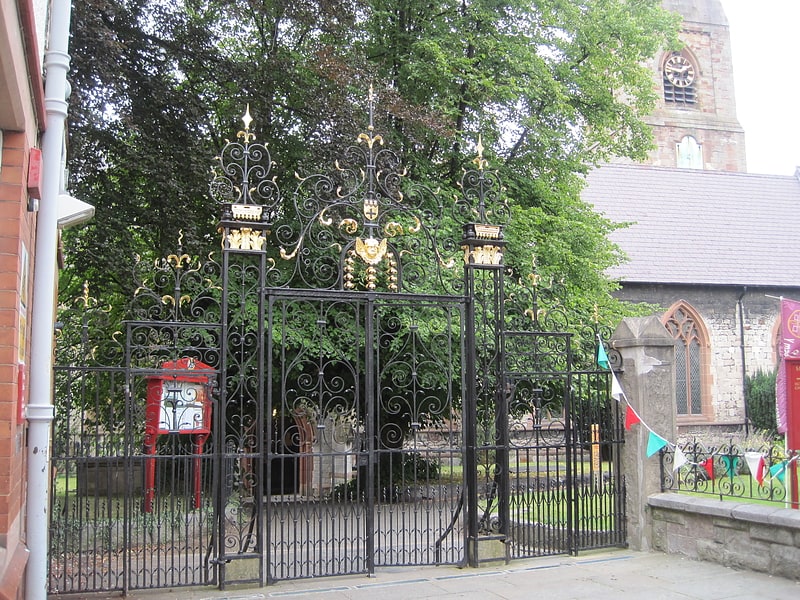
Church in Ruthin, Wales. The Collegiate and Parochial Church of St Peter is the Anglican parish church of Ruthin, an ancient market town which lies within the Vale of Clwyd in Denbighshire, north east Wales. It is a greater church of the diocese of St Asaph and a Grade I listed building.[4]
Ruthin Gaol
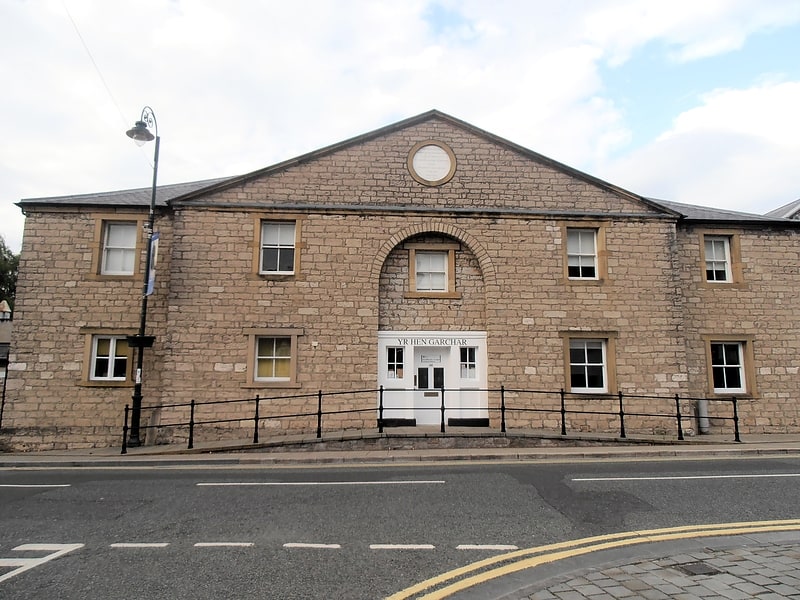
Archive in Ruthin, Wales. Ruthin Gaol is a Pentonville style prison in Ruthin, Denbighshire. Ruthin Gaol ceased to be a prison in 1916 when the prisoners and guards were transferred to Shrewsbury. The County Council bought the buildings in 1926 and used part of them for offices, the county archives, and the town library. During the Second World War the prison buildings were used as a munitions factory, before being handed back to the County Council, when it was the headquarters of the Denbighshire Library Service. In 2004 the Gaol was extensively renovated and reopened as a museum.[5]
Address: Clwyd St, LL15 1HP, Ruthin
Ruthin Castle
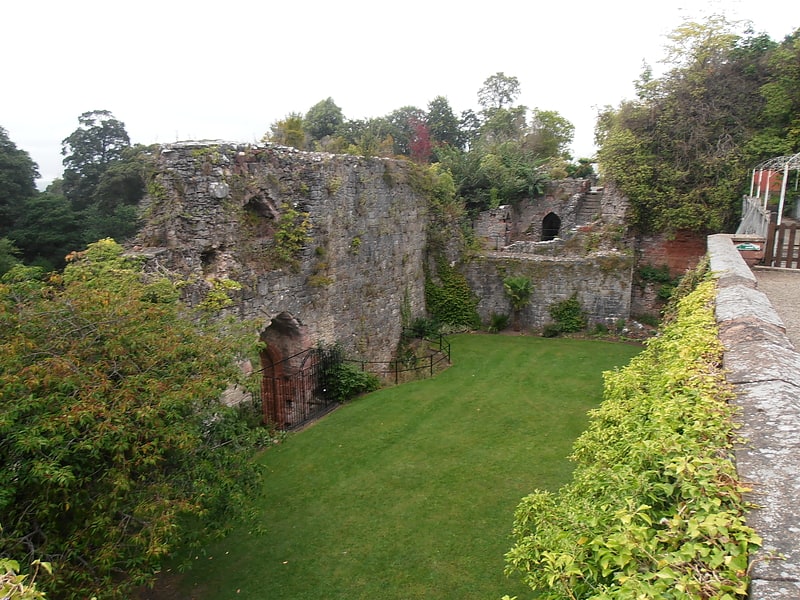
Hotel in Ruthin, Wales. Ruthin Castle is a medieval castle fortification in Wales, near the town of Ruthin in the Vale of Clwyd. It was constructed during the late 13th century by Dafydd ap Gruffydd, the brother of Prince Llywelyn ap Gruffudd, on a red sandstone ridge overlooking the valley. Part of the ancient walls still remain and now form part of the Ruthin Castle Hotel.[6]
Address: Castle Street, Ruthin, Ruthin
The Old Court House
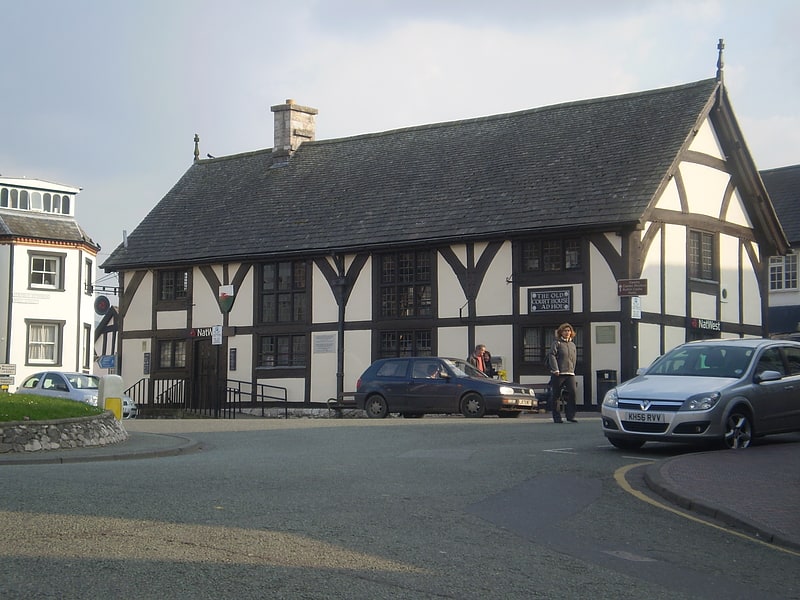
Building in Ruthin, Wales. The Old Court House, Ruthin, Denbighshire, North Wales was built in 1421 and is a Grade II* Listed Building. It was a branch of the National Westminster Bank until its closure in 2017 and is notable for being the first building to be attacked at the outset of Owain Glyndŵr's revolt on 6 September 1400. The previous building on the site of the old court house was an establishment owned by the de Grey's which made it a prime target for Owain Glyndwr in his 1400 sacking of Ruthin. The court house served until 1663 when the town hall was built on the square.
The current building replaced the destroyed building and was the local administrative centre, court, and gaol. Visible within are fine old roof timbers, and on the north-west outside corner is the stump of a gallows beam. The courthouse and cells remained in use from 1420 to 1785 when the new shire hall was built eventually becoming a county court in 1860. Between 1785 and 1860 the police station was housed in Ruthin Gaol. Ruthin could claim to be a county town under the Acts of Union passed during the reign of Henry VIII, with the appropriate meetings of the Court Quarter Sessions and the Great Sessions (or assizes) being held in the town. Ruthin's claim to be a county town was secured with the building of Denbighshire County Council offices however this status was lost under the local government reorganisation in 1974.
The old court house was in commercial use during the 18th century: in 1741 a petition was raised by butchers of the town and given to the owner Richard Myddleton complaining their meat was exposed to all elements of weather. This resulted in the building of “the shambles” a lean-to on the north face of the building (Welsh: “Pendist”) a two-storey construction, photos show 3 dormer windows set into the roof. The butchers earned extra income by offering grandstand seating on the roof for views of the bear baiting which took place on the Square.[7]
Address: 3 Upper Clwyd St, Ruthin
Peers Memorial
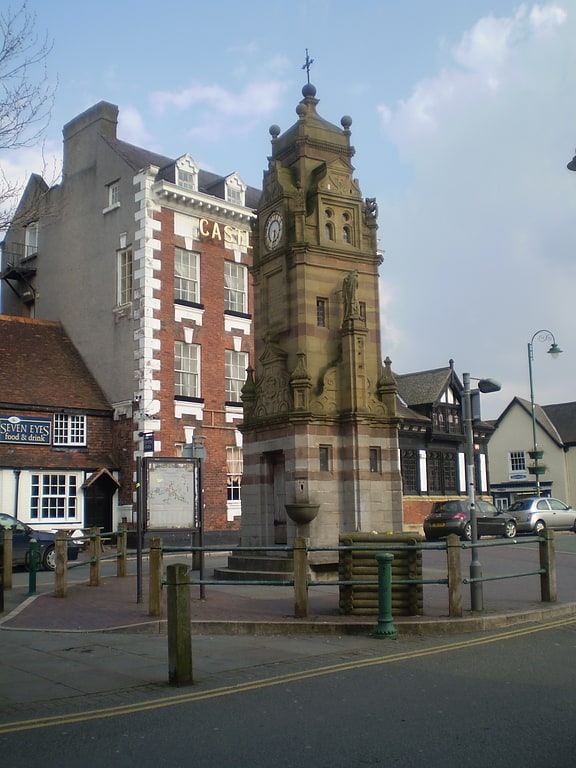
Peers Memorial is in St Peter's Square, Ruthin, Denbighshire, Wales. It is designated by Cadw as a Grade II listed building.[8]
Seven Eyes
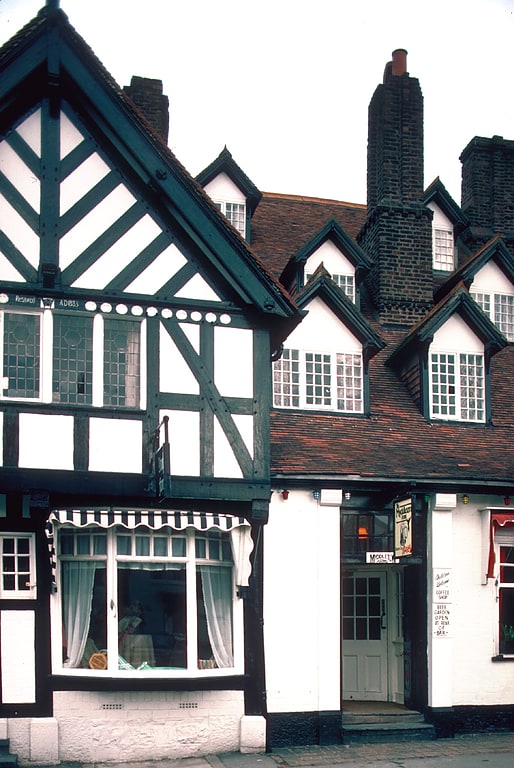
Building. Seven Eyes is a Grade II* listed building in the community of Ruthin, Denbighshire, Wales, which dates back to the 16th century. It was listed by Cadw. The property was acquired in 1595 by Sir Hugh Myddleton who provided London with its first fresh water supply and remodelled in the mid 17th century by Sir Richard Clough, in a similar fashion to his Bachegraig hall.
The multi-dormered tiled roof building, also known as "The Eyes of Ruthin" due to the seven dormer windows, originally framed with timber but replaced with brick in the late 18th century. The Dutch design, long, steeped roof is attributed to Sir Richard Clough, an Elizabethan merchant. It has four tiers of dormer windows, each at a different elevation, known locally as the seven eyes of Ruthin.
The interior features of the building include three tiers of dormer windows set within the tiled roof and the spere truss (or aisle-truss) which is clearly visible upstairs.
The exact dating of the house is unknown, what is certain is that the core of the house was a medieval hall-house type, now difficult to recognise due to the many alterations that have taken place. In one of the rooms is a mural bearing, in moulding, the date 1657 and the Langford coat-of-arms. The Langfords were brought to Ruthin by the de Greys in the 15th century and served as constables of Ruthin Castle. The property is said to have been purchased by Sir Hugh Myddleton in 1595. Sir Hugh virtually bankrupted himself in providing London with its first fresh water. Originally from a Denbigh family and a Denbigh benefactor in 1622 he was made a baronet as Sir Hugh Myddleton of Ruthin, citizen and Goldsmith of London[9]
Ruthin Town Hall
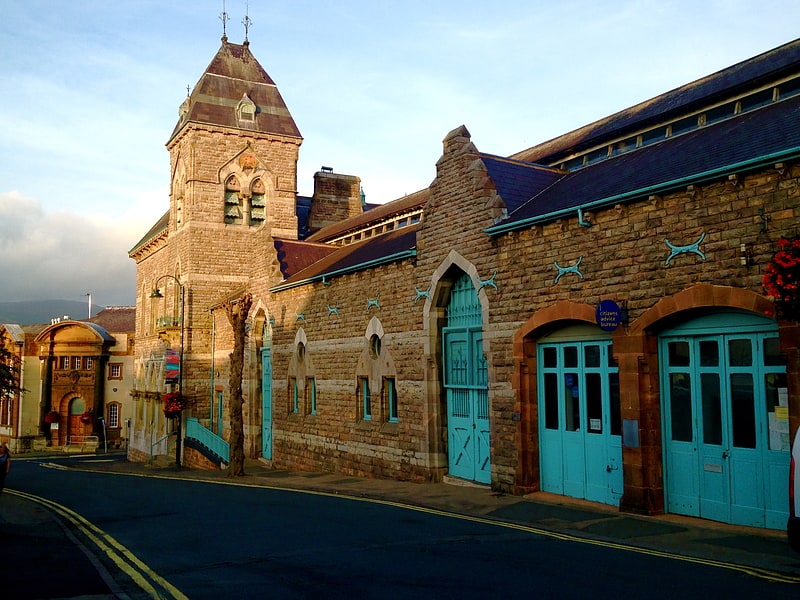
Ruthin Town Hall is a municipal facility in Market Street, Ruthin, Denbighshire, Wales. It is a Grade II listed building.[10]
Maen Huail
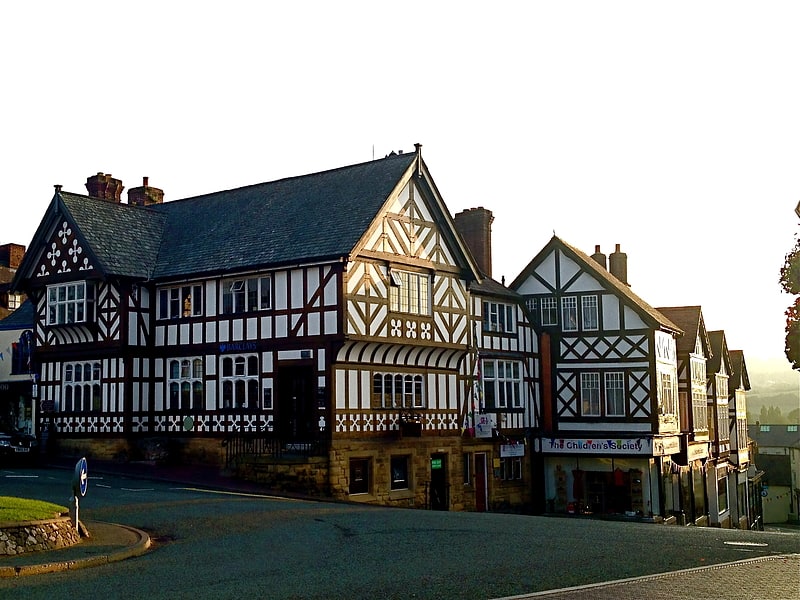
Maen Huail is a stone block at St Peter's Square, in the centre of Ruthin, Denbighshire, North Wales. A circular plaque next to it states "Maen Huail on which tradition states, King Arthur beheaded Huail, brother of Gildas the historian". The stone was recorded in 1699 as being in the middle of the road, and now stands on a concrete plinth against the half-timbered wall of the Barclays Bank building, a 20th-century copy of the now mainly destroyed Exmewe Hall.
The legend probably originated as an oral tradition, and is first recorded in the Chronicle of Six Ages of the World by Elis Gruffydd, dating to around 1550. The stone itself is thought more likely to be a market or civic stone, or a preaching stone. It is a craggy and heavily weathered limestone boulder, measuring 1.2 metres (3.9 ft) long, and some 0.6 metres (2.0 ft) high and wide.[11]